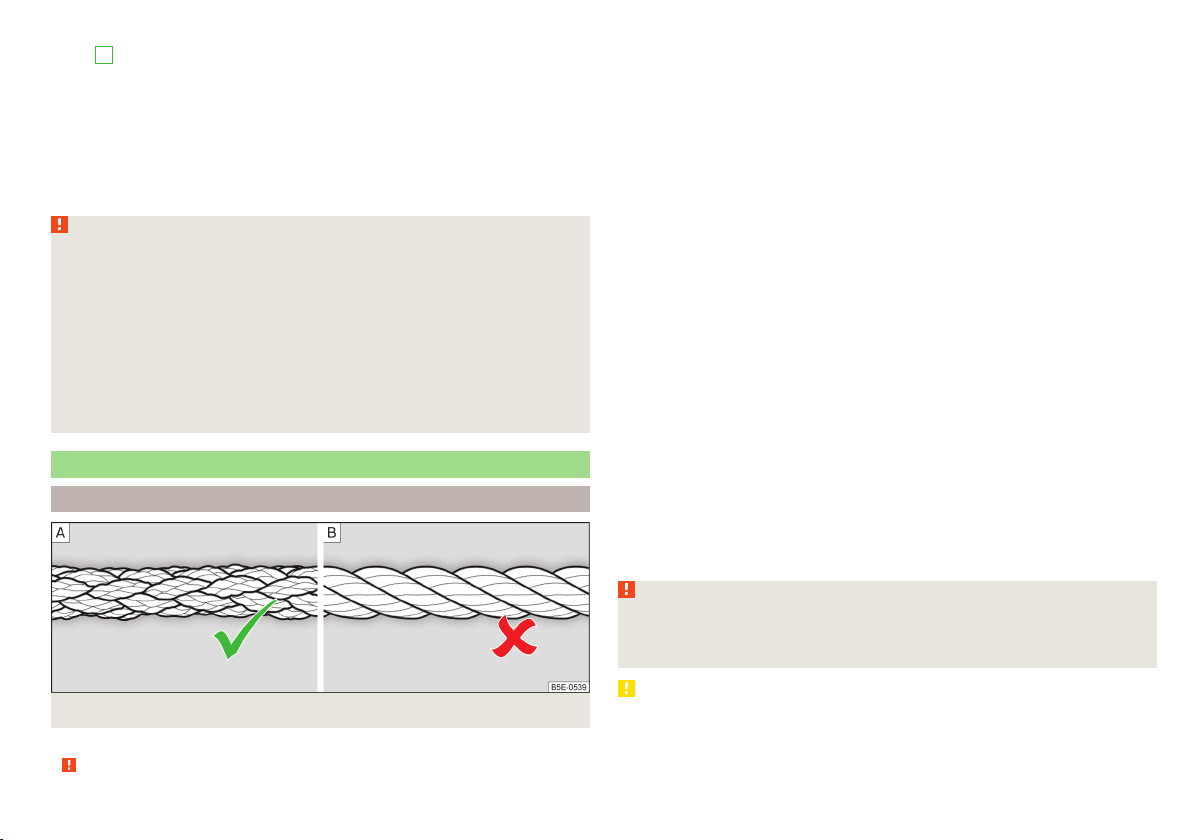Loading ...
Loading ...
Loading ...

›
Clamp the negative terminal of the jumper cable to the earth point of the en-
gine
A
or on a metal part firmly connected to the engine block or directly on
the engine block.
Starting engine
›
Start the engine on the vehicle providing the power and allow it to idle.
›
Initiate the starting process in the vehicle with the discharged battery.
›
If the engine does not start within 10 s, then cancel the starting procedure
and repeat after half a minute.
›
Remove the jump start cables in the reverse order as attachment.
WARNING
■
Never clamp the jump cable to the negative terminal of the discharged
battery - risk of explosion.
■
The non-insulated parts of the terminal clamps must never touch each
other – there is a risk of short circuit!
■
The jump-start cable connected to the positive terminal of the battery
must not come into contact with electrically conducting parts of the vehi-
cle – there is a risk of short circuit!
■
Position the jump cables so that they cannot be caught in rotating parts in
the engine compartment - danger of injuries and the risk of vehicle dam-
age.
Towing the vehicle
Information about the towing process
Fig. 253
Braided tow rope / Spiral tow rope
To tow with a tow rope, use only a braided synthetic fibre rope » Fig. 253 -
» .
Attach the tow rope or the tow bar to the towing eyes at the front
» page 218, towing eyes at the rear » page 218 or to the towing device of the
trailer device » page 183.
Conditions for towing.
Cars with automatic gearboxes must not be towed with the rear wheels
raised - there is a risk of gearbox damage!
If the gearbox has no oil, your vehicle must be towed with the front axle
raised clear of the ground or on a breakdown vehicle or trailer.
The maximum towing speed is 50 km/h.
The vehicle must be transported on a special breakdown vehicle or trailer
if it is not possible to tow the vehicle in the way described or if the towing
distance is greater than 50 km.
Driver of the tow vehicle
›
On vehicles with manual transmission, engage gear slowly when starting.
›
On vehicles with automatic transmission, accelerate with particular care.
›
Only then approach correctly when the rope is taut.
Driver of the towed vehicle
›
If possible, the vehicle should be towed with the engine running. The brake
booster and power steering only operate if the engine is running, otherwise
much greater force has to be applied to the brake pedal and more power has
to be expended for steering.
›
If it is not possible to start the engine, switch on the ignition so that the
steering wheel does not lock and so that the turn signal lights, windscreen
wipers and windscreen washer system can be used.
›
Take the vehicle out of gear or move the selector lever into position N if the
vehicle is fitted with an automatic gearbox.
›
Keep the tow rope taut at all times during the towing procedure.
WARNING
■
Spiral tow ropes must not be used for towing » Fig. 253- , the towing
eye may unscrew out of the vehicle – risk of accident.
■
The tow rope should not be twisted - there is a risk of accidents.
CAUTION
■
Do not tow-start the engine – risk of damaging the engine! The battery from
another vehicle can be used as a jump-start aid » page 216, Jump-starting.
■
For off-road towing manoeuvres, there is a risk to both vehicles that the fas-
teners may become overloaded and damaged.
217
Emergency equipment and self-help
Loading ...
Loading ...
Loading ...